Challenges Victor A. Sadovnichiy
Visit to download the full and correct content document: https://textbookfull.com/product/modern-mathematics-and-mechanics-fundamentals-p roblems-and-challenges-victor-a-sadovnichiy/
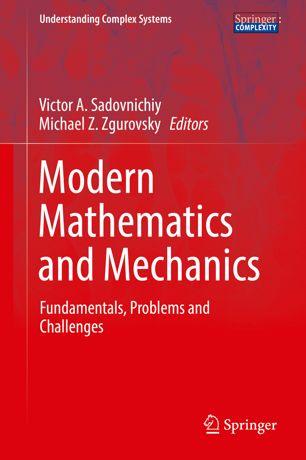
More products digital (pdf, epub, mobi) instant download maybe you interests ...
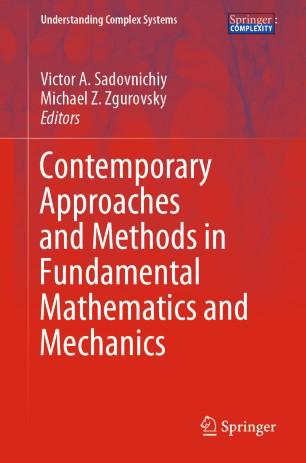
Contemporary Approaches and Methods in Fundamental Mathematics and Mechanics Victor A. Sadovnichiy
https://textbookfull.com/product/contemporary-approaches-andmethods-in-fundamental-mathematics-and-mechanics-victor-asadovnichiy/
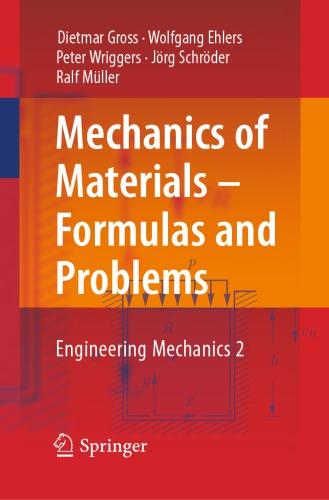
Mechanics of Materials Formulas and Problems
Engineering Mechanics 2 1st Edition Dietmar Gross
https://textbookfull.com/product/mechanics-of-materials-formulasand-problems-engineering-mechanics-2-1st-edition-dietmar-gross/
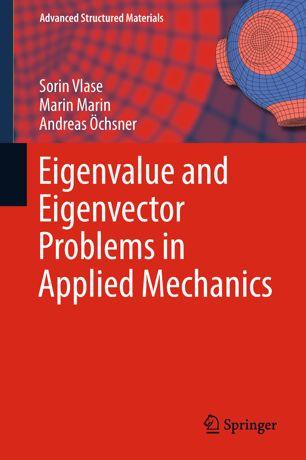
Eigenvalue and Eigenvector Problems in Applied Mechanics Sorin Vlase
https://textbookfull.com/product/eigenvalue-and-eigenvectorproblems-in-applied-mechanics-sorin-vlase/
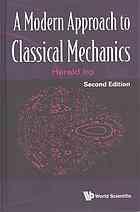
A modern approach to classical mechanics Iro
https://textbookfull.com/product/a-modern-approach-to-classicalmechanics-iro/
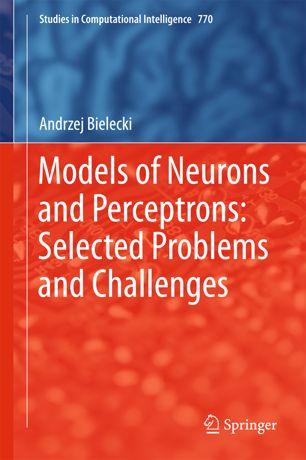
Models of Neurons and Perceptrons: Selected Problems and Challenges Andrzej Bielecki
https://textbookfull.com/product/models-of-neurons-andperceptrons-selected-problems-and-challenges-andrzej-bielecki/
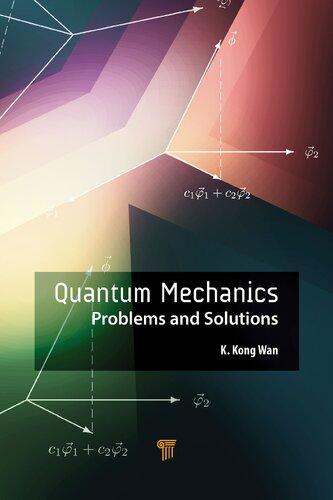
Quantum Mechanics Problems and Solutions 1st Edition K. Kong Wan (Editor)
https://textbookfull.com/product/quantum-mechanics-problems-andsolutions-1st-edition-k-kong-wan-editor/
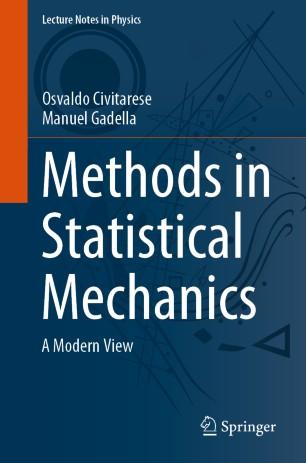
Methods in Statistical Mechanics A Modern View Osvaldo Civitarese
https://textbookfull.com/product/methods-in-statisticalmechanics-a-modern-view-osvaldo-civitarese/

Microfluidics: Modeling, Mechanics and Mathematics. A volume in Micro and Nano Technologies Bastian E. Rapp (Auth.)
https://textbookfull.com/product/microfluidics-modelingmechanics-and-mathematics-a-volume-in-micro-and-nanotechnologies-bastian-e-rapp-auth/
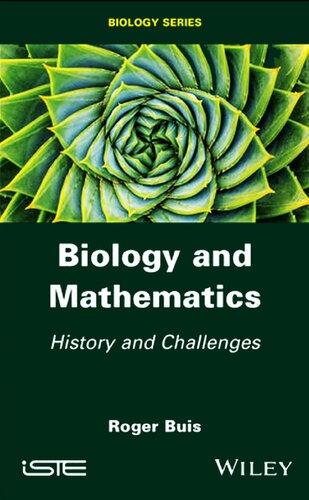
Biology and Mathematics History and Challenges 1st Edition Roger Buis
https://textbookfull.com/product/biology-and-mathematics-historyand-challenges-1st-edition-roger-buis/
Understanding Complex Systems

Victor A. Sadovnichiy
Michael Z. Zgurovsky Editors


Modern Mathematics and Mechanics
Fundamentals, Problems and Challenges
SpringerComplexity
SpringerComplexityisaninterdisciplinaryprogrampublishingthebestresearchand academic-levelteachingonbothfundamentalandappliedaspectsofcomplexsystems— cuttingacrossalltraditionaldisciplinesofthenaturalandlifesciences,engineering, economics,medicine,neuroscience,socialandcomputerscience.
ComplexSystemsaresystemsthatcomprisemanyinteractingpartswiththeabilityto generateanewqualityofmacroscopiccollectivebehaviorthemanifestationsofwhichare thespontaneousformationofdistinctivetemporal,spatialorfunctionalstructures.Models ofsuchsystemscanbesuccessfullymappedontoquitediverse“real-life”situationslike theclimate,thecoherentemissionoflightfromlasers,chemicalreaction-diffusionsystems, biologicalcellularnetworks,thedynamicsofstockmarketsandoftheinternet,earthquake statisticsandprediction,freewaytraffic,thehumanbrain,ortheformationofopinionsin socialsystems,tonamejustsomeofthepopularapplications.
Althoughtheirscopeandmethodologiesoverlapsomewhat,onecandistinguishthe followingmainconceptsandtools:self-organization,nonlineardynamics,synergetics, turbulence,dynamicalsystems,catastrophes,instabilities,stochasticprocesses,chaos,graphs andnetworks,cellularautomata,adaptivesystems,geneticalgorithmsandcomputational intelligence.
ThethreemajorbookpublicationplatformsoftheSpringerComplexityprogramarethe monographseries“UnderstandingComplexSystems”focusingonthevariousapplications ofcomplexity,the“SpringerSeriesinSynergetics”,whichisdevotedtothequantitative theoreticalandmethodologicalfoundations,andthe“SpringerBriefsinComplexity”which areconciseandtopicalworkingreports,case-studies,surveys,essaysandlecturenotesof relevancetothefield.Inadditiontothebooksinthesetwocoreseries,theprogramalso incorporatesindividualtitlesrangingfromtextbookstomajorreferenceworks.
EditorialandProgrammeAdvisoryBoard
HenryAbarbanel,InstituteforNonlinearScience,UniversityofCalifornia,SanDiego,USA DanBraha,NewEnglandComplexSystemsInstituteandUniversityofMassachusettsDartmouth,USA PéterÉrdi,CenterforComplexSystemsStudies,KalamazooCollege,USAandHungarianAcademy ofSciences,Budapest,Hungary
KarlFriston,InstituteofCognitiveNeuroscience,UniversityCollegeLondon,London,UK HermannHaken,CenterofSynergetics,UniversityofStuttgart,Stuttgart,Germany ViktorJirsa,CentreNationaldelaRechercheScientifique(CNRS),UniversitédelaMéditerranée,Marseille, France
JanuszKacprzyk,SystemResearch,PolishAcademyofSciences,Warsaw,Poland KunihikoKaneko,ResearchCenterforComplexSystemsBiology,TheUniversityofTokyo,Tokyo,Japan ScottKelso,CenterforComplexSystemsandBrainSciences,FloridaAtlanticUniversity,BocaRaton,USA MarkusKirkilionis,MathematicsInstituteandCentreforComplexSystems,UniversityofWarwick, Coventry,UK
JürgenKurths,NonlinearDynamicsGroup,UniversityofPotsdam,Potsdam,Germany RonaldoMenezes,FloridaInstituteofTechnology,ComputerScienceDepartment,150W.UniversityBlvd, Melbourne,FL32901,USA
AndrzejNowak,DepartmentofPsychology,WarsawUniversity,Poland HassanQudrat-Ullah,SchoolofAdministrativeStudies,YorkUniversity,Toronto,ON,Canada LindaReichl,CenterforComplexQuantumSystems,UniversityofTexas,Austin,USA PeterSchuster,TheoreticalChemistryandStructuralBiology,UniversityofVienna,Vienna,Austria FrankSchweitzer,SystemDesign,ETHZurich,Zurich,Switzerland
DidierSornette,EntrepreneurialRisk,ETHZurich,Zurich,Switzerland
StefanThurner,SectionforScienceofComplexSystems,MedicalUniversityofVienna,Vienna,Austria
UnderstandingComplexSystems
FoundingEditor:S.Kelso
Futurescientificandtechnologicaldevelopmentsinmanyfieldswillnecessarily dependuponcomingtogripswithcomplexsystems.Suchsystemsarecomplexin boththeircomposition–typicallymanydifferentkindsofcomponentsinteracting simultaneouslyandnonlinearlywitheachotherandtheirenvironmentsonmultiple levels–andintherichdiversityofbehaviorofwhichtheyarecapable.
TheSpringerSeriesinUnderstandingComplexSystemsseries(UCS)promotes newstrategiesandparadigmsforunderstandingandrealizingapplicationsof complexsystemsresearchinawidevarietyoffieldsandendeavors.UCSis explicitlytransdisciplinary.Ithasthreemaingoals:First,toelaboratetheconcepts, methodsandtoolsofcomplexsystemsatalllevelsofdescriptionandinallscientific fields,especiallynewlyemergingareaswithinthelife,social,behavioral,economic, neuro-andcognitivesciences(andderivativesthereof);second,toencouragenovel applicationsoftheseideasinvariousfieldsofengineeringandcomputationsuchas robotics,nano-technologyandinformatics;third,toprovideasingleforumwithin whichcommonalitiesanddifferencesintheworkingsofcomplexsystemsmaybe discerned,henceleadingtodeeperinsightandunderstanding.
UCSwillpublishmonographs,lecturenotesandselectededitedcontributions aimedatcommunicatingnewfindingstoalargemultidisciplinaryaudience.
Moreinformationaboutthisseriesat http://www.springer.com/series/5394
VictorA.Sadovnichiy•MichaelZ.Zgurovsky
Editors
ModernMathematicsand Mechanics
Fundamentals,ProblemsandChallenges
Editors VictorA.Sadovnichiy
LomonosovMoscowStateUniversity
Moscow,Russia
MichaelZ.Zgurovsky NationalTechnicalUniversityofUkraine “IgorSikorskyKyivPolytechnicInstitute” Kyiv,Ukraine
ISSN1860-0832ISSN1860-0840(electronic) UnderstandingComplexSystems
ISBN978-3-319-96754-7ISBN978-3-319-96755-4(eBook) https://doi.org/10.1007/978-3-319-96755-4
LibraryofCongressControlNumber:2018958922
©SpringerInternationalPublishingAG,partofSpringerNature2019
Thisworkissubjecttocopyright.AllrightsarereservedbythePublisher,whetherthewholeorpartof thematerialisconcerned,specificallytherightsoftranslation,reprinting,reuseofillustrations,recitation, broadcasting,reproductiononmicrofilmsorinanyotherphysicalway,andtransmissionorinformation storageandretrieval,electronicadaptation,computersoftware,orbysimilarordissimilarmethodology nowknownorhereafterdeveloped.
Theuseofgeneraldescriptivenames,registerednames,trademarks,servicemarks,etc.inthispublication doesnotimply,evenintheabsenceofaspecificstatement,thatsuchnamesareexemptfromtherelevant protectivelawsandregulationsandthereforefreeforgeneraluse.
Thepublisher,theauthorsandtheeditorsaresafetoassumethattheadviceandinformationinthisbook arebelievedtobetrueandaccurateatthedateofpublication.Neitherthepublishernortheauthorsor theeditorsgiveawarranty,expressorimplied,withrespecttothematerialcontainedhereinorforany errorsoromissionsthatmayhavebeenmade.Thepublisherremainsneutralwithregardtojurisdictional claimsinpublishedmapsandinstitutionalaffiliations.
ThisSpringerimprintispublishedbytheregisteredcompanySpringerNatureSwitzerlandAG Theregisteredcompanyaddressis:Gewerbestrasse11,6330Cham,Switzerland
Preface
Thegivencollectionofpapershasbeenorganizedasaresultofregularopen jointacademicpanelsofresearchworkersfromtheFacultyofMechanicsand MathematicsofLomonosovMoscowStateUniversityandInstituteforApplied SystemsAnalysisoftheNationalTechnicalUniversityofUkraine“IgorSikorsky KyivPolytechnicInstitute.”Thisvolume isdevotedtothefundamentalsofmodern mathematicsandmechanics.Itattracted attentionofresearchersfromleading scientificschoolsofBrazil,France,Germany,Poland,RussianFederation,Spain, Mexico,Ukraine,theUSA,andothercountries.
Moderntechnologicalapplicationsrequiredevelopmentandsynthesisoffundamentalandappliedscientificareas,withaviewtoreducingthegapthat maystillexistbetweentheoreticalbasisusedforsolvingcomplicatedtechnical problemsandimplementationofobtainedinnovations.Tosolvetheseproblems, mathematicians,mechanics,andengineersfromwideresearchandscientificcenters havebeenworkingtogether.Resultsoftheirjointefforts,includingdifferential geometry,dynamicsofdifferentialanddifferenceequationsandapplications,solid mechanics,andmodernmethodsofoptimizationandcontrol,arepartiallypresented here.Infact,serialpublicationofsuchcollectedpaperstosimilarseminarsis planned.
Thisisthesequelofearliervolumes:
•Zgurovsky,MichaelZ.;Sadovnichiy,VictorA.(Eds.)ContinuousandDistributedSystems:Theory andApplicationsSeries:SolidMechanicsandIts Applications,Vol.211,2014,XIX,333p.33illus.,14illus.incolor.
•VictorA.SadovnichiyandMichaelZ.Zgurovsky(Eds.),Continuousand DistributedSystems:TheoryandApplications,VolumeII,StudiesinSystems, DecisionandControl,Volume30,2015,Springer,Heidelbergxxiv+375pp
•VictorA.SadovnichiyandMichaelZ.Zgurovsky(Eds.),AdvancesinDynamical SystemsandControl,StudiesinSystems,DecisionandControl,Volume69, 2016,Springer,Heidelbergxxii+471pp
Inthisvolume,weareplanningtofocusonthefundamentalsofmodernmathematicsandmechanics:
(1)Weprovidethesolutionstomodernfundamentalproblemsincludingthe complexityofcomputingofcriticalpointsforset-valuedmappings,the behaviorofsolutions(stability,existence,andlong-timebehaviorofsolutions, attractorsandrepellers,numericalapproximations,chaos,entropy,andmany otherfeaturescharacterizingthedynamicsofsolutions)ofordinarydifferentialequations,partialdifferentialequations,anddifferenceequations,the developmentofabstracttheoryofglobalattractorsformulti-valuedimpulsive dynamicalsystems,etc.;
(2)Theabstractmathematicalapproaches,suchasdifferentialgeometry,differentialequations,anddifferenceequations,areappliedtothepracticalapplicationsinsolidmechanics,hydro-,aerodynamics,optimization,decisionmakingtheory,andcontroltheory.Inparticular,inmechanics:classesof HamiltoniansystemscanbestudiedintermsofFomenko-Zieschanginvariants;insolidmechanics:analgorithmforsplittinganequilibriumdisplacementequationsystemwithbulkforcesforatransverselyisotropiclinearly elasticmediumthatleadstothreeuncoupledequationswithcertaincanonical fourth-orderdifferentialoperatorsin thethreecomponentsofthedisplacement vectorisdescribed;inhydrodynamics:asimplifiedmodelofthetrapped vortexisappliedtodeterminetheoptimalparametersofthecontroldevice anddynamicalsystemanalysisisusedtoexploretheperformanceofthis controlstrategy;inaerodynamics:theeffectsofairfoilthicknessandangleof-attackonnonlinearwakeandwingdynamiccharacteristicsareexamined; inoptimization:anoptimalboundarycontrolproblemforthesystemofnonlinearintegro-differentialevolutionequation(cp.Burgers-Sivanskyequation) describingthebehavioroftheflamefrontinterfaceundersomephysical assumptionsissolved;incontrol:themethodsofautomationofimpulse processescontrolincognitivemapswithmultiratesamplingofmeasured verticescoordinatesaredeveloped.
(3)Wehopethatthesecompilationswillbeofinteresttomathematiciansand engineersworkingattheinterfaceofthesefields.
Thebookisaddressedtoawidecircleofmathematical,mechanical,and engineeringreaders.
Moscow,RussianFederationVictorA.Sadovnichiy Kyiv,UkraineMichaelZ.Zgurovsky May2018
InternationalEditorialBoardofThis Volume
Editors-in-Chief
• V.A.Sadovnichiy,LomonosovMoscowStateUniversity,RussianFederation
• M.Z.Zgurovsky,NationalTechnicalUniversityofUkraine“IgorSikorskyKyiv PolytechnicInstitute”,Ukraine
AssociateEditors
• V.N.Chubarikov,LomonosovMoscowStateUniversity,RussianFederation
• D.V.Georgievskii,LomonosovMoscowStateUniversity,RussianFederation
• O.V.Kapustyan,NationalTarasShevchenkoUniversityofKyivandInstitute forAppliedSystemAnalysis,NationalTechnicalUniversityofUkraine“Igor SikorskyKyivPolytechnicInstitute”,Ukraine
• P.O.Kasyanov,InstituteforAppliedSystemAnalysis,NationalTechnical UniversityofUkraine“IgorSikorskyKyivPolytechnicInstitute”andWorldData CenterforGeoinformaticsandSustainableDevelopment,Ukraine
• J.Valero,UniversidadMiguelHernandezdeElche,Spain
Editors
• TomásCaraballo,UniversidaddeSevilla,Spain
• N.M.Dobrovol’skii,TulaStateLevTolstoyPedagogicalUniversity,Russian Federation
• E.A.Feinberg,StateUniversityofNewYorkatStonyBrook,USA
• D.Gao,VirginiaTech,USA
• MaríaJoséGarrido-Atienza,UniversidaddeSevilla,Spain
• D.Korkin,UniversityofMissouri,Columbia,USA
• PedroMarín-Rubio UniversidaddeSevilla,Spain
• FranciscoMorillas UniversidaddeValencia,Spain
PartIDifferentialGeometry
1ConvergenceAlmostEverywhereofOrthorecursive ExpansionsinSystemsofTranslatesandDilates .......................3 VladimirV.Galatenko,TarasP.Lukashenko, andVictorA.Sadovnichiy
1.1Introduction ...........................................................3
1.2ExpansioninaSystemofFunctionswithDyadicSupports ........5
1.3ResultforSystemsofTranslatesandDilates .......................9
1.4ConcludingRemarks .................................................10
2Three-DimensionalManifoldsofConstantEnergyand InvariantsofIntegrableHamiltonianSystems ..........................13 AnatolyT.FomenkoandKirillI.Solodskih
2.1IntegrableHamiltonianSystemswithTwoDegrees ofFreedom ............................................................13
2.1.1HamiltonianVectorFields .................................13
2.1.2LiouvilleEquivalenceofHamiltonianIntegrable Systems .....................................................14
2.1.3Fomenko-ZieschangInvariants ............................15
2.1.4SimpleExamplesofMolecules ............................19
2.2HomotopyInvariantsof Q3 ..........................................20
2.2.1FundamentalGroup π1 (Q3 ) ...............................20
2.2.2HomologyGroupH1 (Q3 , Z) ...............................23
2.3Reidemeister-FranzTorsion .........................................25
2.3.1TheTorsionofaSimpleMolecule .........................25
2.3.2Corollaries ..................................................26
2.4IntegrableGeodesicFlowsinaPotentialFieldontheTorus ofRevolution .........................................................27
2.4.1Introduction .................................................27
2.4.2MainResults ................................................28
3ApplyingCirculantMatricesPropertiestoSynchronization Problems .....................................................................31
JoseS.Cánovas
3.1Introduction ...........................................................31
3.2CirculantMatrices:DefinitionsandBasicResults ..................32
3.3BasicNotionsonDiscreteDynamicalSystems
3.3.1PeriodicOrbitsandTopologicalDynamics
3.3.2DynamicsofContinuousIntervalMaps
3.3.3PiecewiseMonotoneMaps:EntropyandAttractors
3.3.4ComputingTopologicalEntropy ...........................40
3.3.5DynamicsinHigherDimension ...........................41
3.4ApplicationtoOligopolyDynamics .................................42
3.4.1Puu–Norin’sOligopoly .....................................45
3.5CoupledMapsLatticeModels .......................................50
3.5.1ChemicalReactions:Belushov–Zhabotinsky ChemicalReaction ..........................................50
3.5.2ApplicationtoBiologicalSystems .........................51
3.5.3MathematicalAnalysisoftheModels .....................52 References ....................................................................54
4ExistenceandInvarianceofGlobalAttractorsforImpulsive ParabolicSystemWithoutUniqueness ...................................57 SergeyDashkovskiy,PetroFeketa,OleksiyV.Kapustyan, andIrynaV.Romaniuk
4.1Introduction ...........................................................57
4.2GlobalAttractorsofAbstractMulti-ValuedImpulsive DynamicalSystems ..................................................59
4.3ApplicationtoImpulsiveParabolicSystem .........................65 References ....................................................................77
5FraktalandDifferentialPropertiesoftheInversorofDigitsof Qs -RepresentationofRealNumber ......................................79 OlegBarabash,OlegKopiika,IrynaZamrii,ValentynSobchuk, andAndreyMusienko
5.1Introduction ...........................................................80
5.2 Qs -RepresentationofRealNumber .................................81
5.3InversorofDigitsof Qs -RepresentationforFractionalPart ofRealNumber .......................................................83
5.4DifferentialPropertiesoftheInversor ...............................84
5.5FractalPropertiesoftheInversor ....................................90
5.6Conclusion ............................................................93 References ....................................................................94
6AlmostSureAsymptoticPropertiesofSolutionsofaClassof Non-homogeneousStochasticDifferentialEquations ..................97 OlegI.KlesovandOlenaA.Tymoshenko
6.1Introduction ...........................................................97
6.2SettingoftheProblem ...............................................99
6.3MainResult ...........................................................100
6.3.1SomeSufficientConditionsfor(6.17)
6.3.2SharpnessofTheorem6.1 ..................................106
6.4SomeExamples
6.4.1PopulationGrowthModel ..................................108
6.4.2Rendleman–BartterModel
6.4.3AsymptoticBehaviorofSolutionsofStochastic DifferentialEquation(6.7)
PartIISolidMechanics
7ProcedureoftheGalerkinRepresentationinTransversely IsotropicElasticity ..........................................................117
DimitriV.Georgievskii
7.1TheClassicGalerkinRepresentationinIsotropicElasticity
7.2SplittingoftheSystemofDisplacementEquations inAnisotropicElasticity .............................................119
7.3TransverselyIsotropicMedium
8SymmetriesandFundamentalSolutionsofDisplacement EquationsforaTransverselyIsotropicElasticMedium
AlexanderV.Aksenov
8.1IntroductionandtheMainResult
8.2TheBasicEquations .................................................130
8.3SymmetriesoftheBasicEquations
8.4FundamentalSolution
8.5Conclusion
9ModificationofHydrodynamicandAcousticFieldsGenerated byaCavitywithFluidSuction ............................................137 VolodymyrG.Basovsky,IrynaM.Gorban,andOlhaV.Khomenko
9.1Introduction ...........................................................137
9.2ProblemStatementandNumericalProcedure
9.2.1HydrodynamicCalculations ................................141
9.2.2FarAcousticField ..........................................144
9.2.3DetailsoftheNumericalScheme
9.3Results
9.3.1NaturalFlowinOpenCylindricalCavity
9.3.2CavityFlowwithFluidSuction ............................153 9.4Conclusion ............................................................157 References ....................................................................157
10NumericalModelingoftheWingAerodynamicsat Angle-of-AttackatLowReynoldsNumbers .............................159 IrynaM.GorbanandOleksiyG.Lebid
10.1Introduction ...........................................................159
10.2ProblemStatementandMethodDescription
10.3NumericalMethodology .............................................164
10.4Results ................................................................167
10.4.1DiscretizationDetails .......................................168
10.4.2VorticalFlowPatternsandFrequencyAnalysis
10.4.3Forces .......................................................173 10.5Conclusion ............................................................177 References ....................................................................178
11StrongSolutionsoftheThinFilmEquationinSpherical Geometry ....................................................................181 RomanM.Taranets
11.1Introduction ...........................................................181
11.2ExistenceofStrongSolutions .......................................183
11.3ProofofTheorem11.1 ...............................................184
11.3.1RegularisedProblems ......................................184
11.3.2ExistenceofWeakSolutions ...............................185 11.3.3ExistenceofStrongSolutions ..............................187 11.3.4AsymptoticBehaviour ......................................188 References ....................................................................191
PartIIIDynamicsofDifferentialandDifferenceEquationsand Applications
12SequenceSpaceswithVariableExponentsforLatticeSystems withNonlinearDiffusion ...................................................195 XiaoyingHan,PeterE.Kloeden,andJacsonSimsen
12.1Introduction ...........................................................195
12.2FormulationofSequenceSpaceswithVariableExponents ........197 12.3Propertiesof ρ and · p ............................................200
12.4PropertiesoftheSpace P ...........................................206
12.5ClosingRemarks .....................................................213 References ....................................................................214
13AttractorsforaRandomEvolutionEquationwithInfinite Memory:AnApplication ..................................................215 MaríaJ.Garrido-Atienza,BjörnSchmalfuß,andJoséValero
13.1Introduction ...........................................................215 13.2Preliminaries ..........................................................216
13.3Application ...........................................................222
14Non-LipschitzHomogeneousVolterraIntegralEquations
M.R.Arias,R.Benítez,andV.J.Bolós
14.1Introduction ...........................................................238
14.2IncreasingNonlinearVolterraOperatorswithLocally BoundedKernels .....................................................240
14.2.1ContinuousandIncreasingKernels
14.2.2Continuous Like IncreasingKernels
14.2.3ContinuousKernels .........................................244
14.2.4LocallyBoundedKernels ..................................247
14.3IncreasingNonlinearVolterraOperatorswithLocally IntegrableKernels ....................................................248
14.3.1Non-locallyBoundedandMultipleSolutions
14.3.2AbelEquationsasLimitofVolterraEquations
14.4NumericalStudy ......................................................252
14.4.1CollocationMethods .......................................254
15SolvingRandomOrdinaryandPartialDifferentialEquations ThroughtheProbabilityDensityFunction:Theoryand ComputingwithApplications .............................................261
J.Calatayud,J.-C.Cortés,M.Jornet,andA.Navarro-Quiles
15.1IntroductionandMotivation .........................................261
15.2AGlancetotheRVTTechnique
15.3Computingthe1-PDFintheContextofRandomOrdinary DifferentialEquations ................................................265
15.3.1TheNonlinearRandomDifferentialEquationfora FallingBody ................................................265
15.3.2BayesianComputationoftheParametersofaFish WeightGrowthModel ......................................267
15.4ProbabilityDensityFunctionofaSolitonSolution oftheRandomNonlinearDispersivePartialDifferential Equation ..............................................................272
15.4.1BernoulliMethod ...........................................272
15.4.2ApplicationoftheBernoulliMethodtoFinda SolitonSolutionfortheDeterministicNonlinear DispersivePDE .............................................273
15.4.3ObtainingtheProbabilityDensityFunctionofthe SolitonSolution .............................................276
15.4.4Example .....................................................279
15.5Conclusions ...........................................................279
16AStrongAveragingPrincipleforLévyDiffusionsinFoliated SpaceswithUnboundedLeaves ...........................................283 PauloHenriquedaCosta,MichaelA.Högele, andPauloRegisRuffino
16.1Introduction ...........................................................283
16.2ObjectofStudyandMainResults ...................................285
16.2.1TheSetup ...................................................285
16.2.2TheHypothesesandtheMainResult
16.3TheTransversalPerturbations .......................................289
16.4TheAveragingErrorandtheProofoftheMainResult
17YoungDifferentialDelayEquationsDrivenbyHölder ContinuousPaths ...........................................................313 LuuHoangDucandPhanThanhHong
17.1Introduction ...........................................................313
17.2Existence,UniquenessandContinuityoftheSolution
18UniformStrongLawofLargeNumbersforRandomSigned Measures .....................................................................335
O.I.KlesovandI.Molchanov
18.1Introduction ...........................................................335
18.2TheBass–PykeTheorem .............................................336
18.3UniformLawofLargeNumbersforRandomSignedMeasures ...338
18.4ProofofTheorem18.2 ...............................................339
18.5HomogeneousRandomFieldsandStationaryMeasures
18.6StochasticIntegrals ...................................................346
18.7ConcludingRemarks
19OnComparisonResultsforNeutralStochasticDifferential EquationsofReaction-DiffusionTypein L2 (Rd )
OleksandrM.Stanzhytskyi,ViktoriaV.Mogilova, andAlisaO.Tsukanova
19.1Introduction ...........................................................352
19.2ProblemDefinition ...................................................353
19.3Preliminaries ..........................................................357
19.3.1ComparisonTheoremforFinite-DimensionalCase
19.3.2ApproximationProperties ..................................360
19.4ProofofTheorem19.1 ...............................................361
20MaximumSetsofInitialConditionsinPracticalStabilityand StabilizationofDifferentialInclusions ...................................397 VolodymyrV.Pichkur
20.1Introduction ...........................................................397
20.2MaximumSetofInitialConditions:NonlinearCase ...............400
20.2.1InternalPracticalStability ..................................400
20.2.2WeakInternalPracticalStability ...........................402
20.2.3WeakExternalPracticalStability ..........................403
20.2.4ExternalPracticalStability .................................403
20.3MaximumSetofInitialConditions:LinearCase ...................404
20.4InternalPracticalStabilization .......................................407 References ....................................................................409
PartIVModernMethodsofOptimizationandControlSciences forContinuumMechanics
21AsymptoticTranslationUniformIntegrabilityandMultivalued DynamicsofSolutionsforNon-autonomousReaction-Diffusion Equations ....................................................................413 MichaelZ.Zgurovsky,PavloO.Kasyanov,NataliiaV.Gorban, andLiliiaS.Paliichuk
21.1Introduction ...........................................................413
21.2ProofofTheorem21.1 ...............................................415
21.3ExamplesofApplications ............................................418
21.4Conclusions ...........................................................422 References ....................................................................422
22AutomationofImpulseProcessesControlinCognitiveMaps withMultirateSamplingBasedonWeightsVarying ...................425 VictorD.RomanenkoandYuriyL.Milyavsky
22.1Introduction ...........................................................425
22.2ProblemStatement ...................................................427
22.3SuppressionofConstrainedDisturbancesinImpulse ProcesseswithMultirateSamplingBasedonInvariant EllipsoidsMethod ....................................................429
22.4DesignofMultirateImpulseProcessesControlSystemsfor StabilizationofCMNodes ...........................................433
22.5ExampleofHumanResourcesManagementinITCompany BasedonCMWeightsIncrementswithMultirateSampling ......435
22.6Conclusion ............................................................440 References ....................................................................443
23OnApproximationofanOptimalControlProblemfor Ill-PosedStronglyNonlinearEllipticEquationwith p -Laplace Operator .....................................................................445
PeterI.KogutandOlhaP.Kupenko
23.1Introduction ...........................................................445
23.2OnConsistencyofOptimalControlProblem(23.2)–(23.5) .......448
23.3OnApproximatingOptimalControlProblemsandTheir PreviousAnalysis ....................................................452
23.4AsymptoticAnalysisofApproximatingOCP(23.26)–(23.29) ....459
23.5OptimalityConditionsforApproximating OCP(23.26)–(23.29) .................................................473 References ....................................................................479
24ApproximateOptimalRegulatorforDistributedControl ProblemwithSuperpositionFunctionalandRapidly OscillatingCoefficients .....................................................481 OlenaA.Kapustian
24.1Introduction ...........................................................481
24.2SettingoftheProblem
24.3MainResults
24.4Conclusion
25DividedOptimalControlforParabolic-HyperbolicEquation withNon-localPointedBoundaryConditionsandQuadratic QualityCriterion ...........................................................493 VolodymyrO.KapustyanandIvanO.Pyshnograiev
25.1Introduction ...........................................................493
25.2TheProblemStatement ..............................................494
25.3TheProblemSolving .................................................497
25.3.1UnboundedControl .........................................497
25.3.2BoundedControl ...........................................503
26Quasi-LinearDifferential-DeferenceGameofApproach ..............505 LesiaV.Baranovska
26.1Introduction ...........................................................505
26.2Differential-DifferenceGamesofApproachwith CommutativeMatrices ...............................................508
26.3Differential-DifferenceGamesofApproachwithPureTime Delay ..................................................................517 References ....................................................................523
27TheProblemofaFunctionMaximizationonaType-2FuzzySet ....525 S.O.MashchenkoandD.O.Kapustian
27.1Introduction ...........................................................525
27.2FormulationoftheProblem ..........................................526
27.3Preliminaries ..........................................................529
27.3.1AFuzzyPreferenceRelation ...............................529
27.3.2ExtensionofaFuzzyPreferenceRelationtothe ClassofFuzzySets .........................................529
27.4FuzzySetofNon-dominatedAlternatives
27.5EffectiveMaximizingAlternatives
27.6Conclusion
28UsingWaveletTechniquestoApproximatetheSubjacent RiskofDeath ................................................................541
F.G.MorillasJuradoandI.BaezaSampere
28.1Introduction ...........................................................542
28.2TheBiometricModel ................................................543
28.3WaveletGraduation ..................................................546
28.3.1WaveletGraduationProblems .............................547
28.3.2CombiningBootstrapandWaveletGraduation
28.4ValidationandApplications
28.4.1ApplicationtoRealData
28.5Conclusions
Contributors
AlexanderV.Aksenov LomonosovMoscowStateUniversity,Moscow,Russian Federation
M.R.Arias DepartmentofMathematics,UniversityofExtremadura,Badajoz, Spain
I.BaezaSampere DepartmentofAppliedEconomy,UniversityofValencia, Valencia,Spain
OlegBarabash StateUniversityofTelecommunications,Kyiv,Ukraine
LesiaV.Baranovska InstituteforAppliedSystemAnalysis,NationalTechnical UniversityofUkraine“IgorSikorskyKyivPolytechnicInstitute”,Kyiv,Ukraine
VolodymyrG.Basovsky InstituteofHydromechanics,NationalAcademyof SciencesofUkraine,Kyiv,Ukraine
R.Benítez DepartmentofBusinessMathematics,UniversityofValencia,Valencia, Spain
V.J.Bolós DepartmentofBusinessMathematics,UniversityofValencia,Valencia, Spain
J.Calatayud InstitutoUniversitariodeMatemáticaMultidisciplinar,Universitat PolitècnicadeValència,Valencia,Spain
JoseS.Cánovas DepartamentodeMatemáticaAplicadayEstadística,Universidad PolitécnicadeCartagena,Cartagena,Spain
J.-C.Cortés InstitutoUniversitariodeMatemáticaMultidisciplinar,Universitat PolitècnicadeValència,Valencia,Spain
PauloHenriquedaCosta DepartamentodeMatemática,UniversidadedeBrasília, Brasília,Brazil
SergeyDashkovskiy UniversityofWürzburg,Würzburg,Germany
LuuHoangDuc MaxPlanckInstituteforMathematicsintheSciences,Leipzig, Germany
InstituteofMathematics,VietnamAcademyofScienceandTechnology,Hanoi, Vietnam
PetroFeketa UniversityofKaiserslautern,Kaiserslautern,Germany
AnatolyT.Fomenko LomonosovMoscowStateUniversity,Moscow,Russian Federation
VladimirV.Galatenko LomonosovMoscowStateUniversity,Moscow,Russian Federation
MaríaJ.Garrido-Atienza Dpto.EcuacionesDiferencialesyAnálisisNumérico, FacultaddeMatemáticas,UniversidaddeSevilla,Sevilla,Spain
DimitriV.Georgievskii LomonosovMoscowStateUniversity,Moscow,Russian Federation
IrynaM.Gorban InstituteofHydromechanics,NationalAcademyofSciencesof Ukraine,Kyiv,Ukraine
NataliiaV.Gorban InstituteforAppliedSystemAnalysis,NationalTechnical UniversityofUkraine“IgorSikorskyKyivPolytechnicInstitute”,Kyiv,Ukraine
XiaoyingHan DepartmentofMathematicsandStatistics,AuburnUniversity, Auburn,AL,USA
MichaelA.Högele DepartamentodeMatemáticas,UniversidaddelosAndes, Bogotá,Colombia
PhanThanhHong ThangLongUniversity,Hanoi,Vietnam
M.Jornet InstitutoUniversitariodeMatemáticaMultidisciplinar,Universitat PolitècnicadeValència,Valencia,Spain
DarynaO.Kapustian TarasShevchenkoNationalUniversityofKyiv,Kyiv, Ukraine
OlenaA.Kapustian TarasShevchenkoNationalUniversityofKyiv,Kyiv,Ukraine
OleksiyV.Kapustyan TarasShevchenkoNationalUniversityofKyiv,Institutefor AppliedSystemAnalysis,NationalTechnicalUniversityofUkraine“IgorSikorsky KyivPolytechnicInstitute”,Kyiv,Ukraine
VolodymyrO.Kapustyan IgorSikorskyKyivPolytechnicInstitute,Kyiv, Ukraine
PavloO.Kasyanov InstituteforAppliedSystemAnalysis,NationalTechnical UniversityofUkraine“IgorSikorskyKyivPolytechnicInstitute”,Kyiv,Ukraine
OlhaV.Khomenko InstituteforAppliedSystemAnalysis,NationalTechnical UniversityofUkraine“IgorSikorskyKyivPolytechnicInstitute”,Kyiv,Ukraine
OlegI.Klesov NationalTechnicalUniversityofUkraine“IgorSikorskyKyiv PolytechnicInstitute”,DepartmentofMathematicalAnalysisandProbabilityTheory,Kyiv,Ukraine
PeterE.Kloeden SchoolofMathematicsandStatistics,HuazhongUniversityof Science&Technology,Wuhan,China
Felix-Klein-ZentrumfürMathematik,TUKaiserslautern,Kaiserslautern,Germany
PeterI.Kogut DifferentialEquationsDepartment,OlesHoncharNationalDnipro University,Dnipro,Ukraine
OlegKopiika InstituteofTelecommunicationsandGlobalInformationSpace, Kyiv,Ukraine
OlhaP.Kupenko SystemAnalysisandControlDepartment,DniproNational TechnicalUniversity“DniproPolytechnics”,Dnipro,Ukraine
InstituteforAppliedandSystemAnalysisofNationalTechnicalUniversityof Ukraine“KievPolytechnicInstitute”,Kiev,Ukraine
OleksiyG.Lebid InstituteofTelecommunicationsandGlobalInformationSpace, NationalAcademyofSciences ofUkraineKyiv,Ukraine,
TarasP.Lukashenko LomonosovMoscowStateUniversity,Moscow,Russian Federation
SergejO.Mashchenko TarasShevchenkoNationalUniversityofKyiv,Kyiv, Ukraine
YuriyL.Milyavsky InstituteforAppliedSystemAnalysis,NationalTechnical UniversityofUkraine“IgorSikorskyKyivPolytechnicInstitute”,Kyiv,Ukraine
ViktoriaV.Mogilova NationalTechnicalUniversityofUkraine“IgorSikorsky KievPolytechnicInstitute”,Kiev,Ukraine
I.Molchanov UniversityofBern,InstituteofMathematicalStatisticsandActuarialScience,Bern,Switzerland
F.G.MorillasJurado DepartmentofAppliedEconomy,UniversityofValencia, Valencia,Spain
AndreyMusienko TarasShevchenkoNationalUniversityofKyiv,Kyiv,Ukraine
A.Navarro-Quiles InstitutoUniversitariodeMatemáticaMultidisciplinar,UniversitatPolitècnicadeValència,Valencia,Spain
LiliiaS.Paliichuk InstituteforAppliedSystemAnalysis,NationalTechnical UniversityofUkraine“IgorSikorskyKyivPolytechnicInstitute”,Kyiv,Ukraine
VolodymyrV.Pichkur TarasShevchenkoNationalUniversityofKyiv,Kyiv, Ukraine
IvanO.Pyshnograiev WorldDataCenterforGeoinformaticsandSustainable Development,NationalTechnicalUniversityofUkraine“IgorSikorskyKyiv PolytechnicInstitute”,Kyiv,Ukraine
VictorD.Romanenko InstituteforAppliedSystemAnalysis,NationalTechnical UniversityofUkraine“IgorSikorskyKyivPolytechnicInstitute”,Kyiv,Ukraine
IrynaV.Romaniuk TarasShevchenkoNationalUniversityofKyiv,Kyiv,Ukraine
PauloRegisRuffino IMECC,UniversidadeEstadualdeCampinas,Campinas, Brazil
VictorA.Sadovnichiy LomonosovMoscowStateUniversity,Moscow,Russian Federation
BjörnSchmalfuß InstitutfürMathematik,InstitutfürStochastik,Jena,Germany
JacsonSimsen DepartamentodeMatemáticaeComputacao,UniversidadeFederal deItajubá,Itajubá,MinasGerais,Brazil
ValentynSobchuk East-EuropeanNationalUniversityofLesyaUkrainka,Lutsk, Ukraine
KirillI.Solodskih LomonosovMoscowStateUniversity,Moscow,RussianFederation
OleksandrM.Stanzhytskyi TarasShevchenkoNationalUniversityofKiev,Kiev, Ukraine
RomanM.Taranets InstituteofAppliedMathematicsandMechanicsofthe NationalAcademyofSciencesofUkraine,Sloviansk,Ukraine
AlisaO.Tsukanova TarasShevchenkoNationalUniversityofKiev,Kiev,Ukraine
OlenaA.Tymoshenko NationalTechnicalUniversityofUkraine“IgorSikorsky KyivPolytechnicInstitute,”DepartmentofMathematicalAnalysisandProbability Theory,Kyiv,Ukraine
JosèValero UniversidadMiguelHernandezdeElche,CentrodeInvestigación Operativa,Elche,Spain
IrynaZamrii StateUniversityofTelecommunications,Kyiv,Ukraine
MichaelZ.Zgurovsky NationalTechnicalUniversityofUkraine“IgorSikorsky KyivPolytechnicInstitute”,Kyiv,Ukraine
DifferentialGeometry
Chapter1 ConvergenceAlmostEverywhere ofOrthorecursiveExpansionsinSystems ofTranslatesandDilates

VladimirV.Galatenko,TarasP.Lukashenko,andVictorA.Sadovnichiy
Abstract Systemsoftranslatesanddilateshavebeenwidelystudiedinthe lastdecades.Inparticular,V.I.FilippovandP.Oswaldobtainedconditions onageneratingfunctionwhichguaranteethatdyadictranslatesanddilatesof thisfunctionformarepresentationsystemin Lp [0, 1].A.Yu.Kudryavtsevand A.V.Politovshowedthatunderaslightly harderconditiononageneratingfunction eachelement f ∈ L2 [0, 1] isrepresentedbyitsorthorecursiveexpansioninthis system.Herewecontinuestudyingorthorecursiveexpansionsinsystemsofdyadic translatesanddilatesandpresentresults onconvergencealmosteverywhereofthese expansions.
1.1Introduction
Systemsoftranslatesanddilateshavebeenwidelystudiedinthelastdecades,in particular,intheoreticalandappliedresearchrelatedtodiscretewavelets[1, 2].Fora caseof [0, 1] segmentanddyadictranslatesanddilatesthesesystemscanbedefined asfollows.Let ϕ beafunctiondefinedon [0, 1].Weextendthisfunctionto R by settingitsvaluestozerooutside [0, 1],andforall k ∈ Z+ and j ∈{0, 1,..., 2k 1} define
ϕk,j (x) = ϕ2k +j (x) = Ck ϕ
Here Ck arepositivenormingconstantswhichcanbeeithersetto1,orselectedin suchawaythatnormsofallfunctions ϕn (n ∈{1, 2, 3,...})intheresultingsystem oftranslatesanddilatesof ϕ equalone.
Wavelettheorygenerallyconsiderssystemsoftranslatesanddilateswithcertain specialproperties,e.g.,orthogonalsystems.ButithasbeenshownbyV.I.Filippov
V.V.Galatenko( )·T.P.Lukashenko·V.A.Sadovnichiy LomonosovMoscowStateUniversity,Moscow,RussianFederation e-mail: vgalat@imscs.msu.ru; lukashenko@mail.ru; info@rector.msu.ru
©SpringerInternationalPublishingAG,partofSpringerNature2019 V.A.Sadovnichiy,M.Z.Zgurovsky(eds.), ModernMathematicsandMechanics, UnderstandingComplexSystems, https://doi.org/10.1007/978-3-319-96755-4_1
4V.V.Galatenkoetal.
andP.Oswald[3]thatforanarbitraryfunction ϕ ∈ Lp [0, 1] (1 ≤ p< ∞)with 1 0 ϕdμ = 0thesystemofitstranslatesanddilatesisarepresentationsystemin Lp ,i.e.,foreveryfunction f ∈ Lp [0, 1] thereexistsasequenceofcoefficients {cn (f)}∞ n=1 suchthattheseries ∞ n=1 cn (f)ϕn convergesto f in Lp -norm.
A.Yu.KudryavtsevandA.V.Politovshowedthatatleastfor p = 2under anadditionalsoftconditionon ϕ ,namely,theconvergenceof ∞ k =1 ω 2 2 ϕ, 2 k , where ω2 istheintegralmodulusofcontinuityin L2 [0, 1],coefficientsforsuch representationcanbefoundbyorthorecursiveexpansion[4].Thisexpansion generalizesclassicalorthogonalexpansionspreservingsuchpropertiesasBessel’s identity,Bessel’sinequality,andtheequivalenceofconvergencetoanexpanded elementandParseval’sidentity[5].Theschemeoforthorecursiveexpansionisalso utilizedingreedyexpansionsinHilbertspaces[6, 7],knowninsignalprocessing andstatisticsasMatchingPursuit[8]andProjectionPursuit[9],respectively. However,greedyexpansionsincludetheselectionofanexpandingelementfrom agivendictionaryateachstep,whileintheconsideredsettingsthesetandtheorder ofelementsintheorthorecursiveexpansionisfixed.
Letusrecallthedefinitionofanorthorecursiveexpansionofanelement f from aHilbertspace H,( · , · ) inasystemofnon-zeroelements {ϕn }∞ n=1 ⊂ H .Weset r0 = f ,andtheninductivelydefinecoefficientsasremaindersasfollows:
fn = (rn 1 ,ϕn ) (ϕn ,ϕn ) ,rn = rn 1 fn ϕn (n = 1, 2, 3,...).
Theseries ∞ n=1 fn ϕn iscalledanorthorecursiveexpansionof f inthesystem {ϕn }∞ n=1 .
Asnotedin[10],themajorityofknownresultsfororthorecursiveexpansionsdeal withtheconvergencewithrespecttothenorminducedbyascalarproduct( L2 -norm forthecaseoffunctionalsystems),andresultsrelatedtopointwiseconvergence arescarce.Inthispaperweshowthatundercertainconditionsorthorecursive expansionsinsystemsoftranslatesanddilatesconvergetoanexpandedfunction notonlyin L2 -norm,butalsoalmosteverywhere.
Inordertofocusonmainideas,butnotontechnicaldetails,herewepresentthe resultinasimpleform,withexcessiveconditionsonafunction ϕ whichgenerates asystemoftranslatesanddilatesandonanexpandedfunction f .Astrengthening ofthepresentedresultwithessentiallyweakerconditionsimposedon ϕ and f will bepresentedinsubsequentpublications.
Theresultpresentedinthispublicationhasbeenpreviouslyannouncedata conferencelevel,butitsproofhasnotbeenpublished.
1.2ExpansioninaSystemofFunctionswithDyadic Supports
Wedonotlimitedtheanalysistosystemsofdyadictranslatesanddilates,but considersystems {ϕn }∞ n=1 ⊂ L2 [0, 1] ofreal-valuedfunctionswithsupp ϕn ⊂ Δn , where Δn isthe n-thdyadicsegment:
=
, j + 1
Inordertosimplifyformulasweassumethat ϕn 2 = 1forall n (here · 2 isthe L2 -norm).Foreverydyadic-irrationalpoint x ∈[0, 1] andevery k ∈ Z+ wedefine nk (x) asanindexlyingin [2k , 2k +1 1] suchthat x ∈ Δnk (x) .Inotherwords, nk (x) isanindexofadyadicsegmentofscale k (or,equivalently,withlength2 k )that covers x Forthesubsequentanalysisofconvergencealmosteverywhere,thefollowing lemmaturnsouttobeuseful.
Lemma1.1 Let {cn }∞ n=1 beasequenceofrealnumberswith ∞ n=1 c 2 n < ∞.Then
∞ k =0 2k c 2 nk (x) convergesalmosteverywhereon [0, 1]
Ascoefficients {fn }∞ n=1 ofanorthorecursiveexpansionofanelement f from aHilbertspaceinanormedsystembelongto 2 duetoBessel’sinequality,this lemmaisapplicabletoorthorecursiveexpansions.Notethatfortheconsideredclass ofsystemsforadyadic-irrationalpoint x alltermsoftheexpansion
n=1 fn ϕn (x) with n/∈{nk (x)}∞ k =0 equalzeroin x .Thuseachdyadic-irrationalpoint x is naturallyassociatedwithasubsetofcoefficients fnk (x) ∞ k =0 ,andtheseriesin dyadic-irrationalpointsisreducedto ∞ k =0 fnk (x) ϕnk (x) (x).
Theproofofthelemmaisquitesimple.Let χn (x) denotetheindicatorfunction of Δn .Letusconsider L1 -normofseriesterms:
Thus,
anditremainstouseLevi’stheorem[11,Ch.8,Sect.30]tocompletetheproof.
Havingthislemma,wecanproceedtothefollowingtheorem.
Theorem1.1 Letallfunctionsofasystem {ϕn (x)}∞ n=1 satisfythefollowingconditions: ϕn ≥ 0; supp ϕ ⊂ Δn and ϕn iscontinuouson Δn ; ϕn 2 = 1.Additionally, letthecondition
(where ωnk (x) ( ) isthemodulusofcontinuityof ϕnk (x) on Δnk (x) )holdforalmost alldyadic-irrationalpoints x ∈[0, 1].Thenforeveryfunction f(x) ∈ L2 [0, 1] its orthorecursiveexpansionin {ϕn (x)}∞ n=1 convergesto f(x) inalmostallcontinuity pointsof f
Inordertoprovethetheorem,wefirstnotethatforall n ∈{1, 2, 3,...} andall x ∈ Δo n thefollowingestimateholds: |rn (x)| ≤ osc rn ,Δo n
Here rn isthe n-thremainderoftheorthorecursiveexpansionof f in {ϕn (x)}∞ n=1 , Δo n = int Δn (i.e., Δo 2k +j = j 2k , j +1 2k , k ∈ Z+ , j ∈{0, 1,..., 2k 1}),andosc denotesoscillationofafunction: osc (g,A) = sup x1 ,x2 ∈A (g(x1 ) g(x2 )).
Indeed,duetothedefinitionoforthorecursiveexpansion rn isorthogonalto ϕn ,and supp ϕn ⊂ Δn ,so Δo n rn (x)ϕn (x)dμ(x) = 0.
Furthermore, ϕn isnon-negativeon Δo n andisstrictlypositiveonapositivemeasure subsetof Δo n ,thus, rn cannotbestrictlypositiveeverywhereon Δo n aswellasstrictly negativeeverywhereon Δo n ,i.e.,valuesof rn on Δo n includebothnon-negativeand non-positivenumbers.Theestimatedirectlyfollowsfromthisfact.
Inparticular,foreverydyadic-irrational x ∈[0, 1] andevery k ∈ Z+ theestimate impliestheinequality
rnk (x) (x) ≤ osc rnk (x) ,Δonk (x) .
1Convergencea.e.ofOrthorecursiveExpansionsinSystemsofTranslatesandDilates7
Asforadyadic-irrational x f(x) N n=1 fn ϕn (x) = rN (x) = rnK (x) (x),
where K = max {k : nk (x) ≤ N },theconvergenceoftheorthorecursiveexpansion in x to f(x) isequivalenttotheconvergenceof rnK (x) (x) ∞ K =0 tozero.Duetothe aboveinequality,inordertoprovethisconvergenceitissufficienttoshowthat
osc rnK (x) ,ΔonK (x) → 0 (K →∞).
Theoscillationscanbetriviallyestimatedasfollows:
osc rnK (x) ,ΔonK (x) = osc
k =
f nK (x) n=1 fn ϕn (x),ΔonK (x) ⎞
(x) ϕnk (x) (x),ΔonK (x) ≤ osc f,ΔnK (x) + K k =0 fnk (x) osc ϕnk (x) ,ΔnK (x) ≤ osc f,ΔnK (x) + K k =0 fnk (x) ωnk (x) 2 K
Letusconsideranarbitrarycontinuitypoint x of f whichsatisfiesthefollowing conditions:
(i) x isdyadic-irrational; (ii) ∞ k =0 2k f 2 nk (x) < ∞; (iii) C(x) := sup
DuetoLemma 1.1 andtheconditionsofthetheoremconditions(i)–(iii)holdfor almostallcontinuitypointsof f .Thetermosc f,ΔnK (x) goestozeroas K →∞ duetocontinuity.Hence,tocompletetheproofofthetheoremitissufficienttoshow
that
alsogoestozero.
Toshowit,letustakeanarbitrarypositive ε andfind K0 ∈ N suchthat
Next,asforafixed k duetocontinuity ωnk (x)
K →∞),wefind K1 >K0 suchthattheinequality
holdsforall K>K1 .Inordertoestimatetheremainingpartofthesumweapply Cauchy’sinequalityandconditions(iii):
Sooverallforall K>K1 theinequality
holds,andtheproofofthetheoremiscomplete.
Theconditionimposed onmoduliofcontinuityinTheorem 1.1 lookstechnical, butitcanbereplacedbyweakerconditionswhichhavemorenaturalform.E.g.,the conditionholdsifforall n ∈{1, 2, 3,...} function ϕn isLipschitzwithconstant An , and An = O n3/2 (or,equivalently, An = O |Δn | 3/2 = O 23k(n)/2 ,where k(n) = log2 n isthescaleof Δn ).Indeed,inthiscasethereexistsaconstant A suchthat An ≤ A · 23k(n)/2 forall n,andforall K ∈ Z+ andalldyadic-irrational
Another random document with no related content on Scribd:
this little warrior, at times rises to a great height, and indeed now and then is scarcely discernible from the ground.
I found a nest of this Hawk in a hole of the well-known “Rock-incave” on the Ohio River, in the early part of the spring of 1819. It was simply constructed, having been formed of a few sticks and some grasses carelessly interwoven, and placed about two feet from the entrance of the hole. I had the good fortune to secure the female bird, while she was sitting on her eggs, which were nearly hatched, and it was from that individual that I made the figure in the plate. The eggs, four in number, were almost equally rounded at both ends, though somewhat elongated, and their ground colour was white, with a livid tinge, scarcely discernible however amid the numerous markings and blotches of reddish-chocolate with which they were irregularly covered. The second opportunity which I had of seeing a nest of this species occurred not far from Louisville in Kentucky, when I accidentally observed one of these hawks dive into the hollow prong of a broken branch of a sycamore overhanging the waters of the Ohio. Here the eggs were five in number, and deposited on the mouldering fragments of the decayed wood. The third and last opportunity happened when I was on my way from Henderson to St Genevieve on horseback. I saw a pair of these birds forming a nest in the forks of a low oak, in a grove in the centre of the prairie which I was then crossing. The young in the nest I have never seen.
This interesting species usually resorts to the fissures of rocks for the purpose of there passing the hours of repose, and generally in places by no means easy of access, such as precipitous declivities overhanging some turbulent stream. It is often not until the darkness has so much gained on the daylight as to render objects difficult to be distinguished, that it betakes itself to its place of rest, and then I have only been assured of its arrival by the few cries which it utters on such occasions. The earliness of its departure has often much puzzled me, for with all my anxiety to witness it, I have never
succeeded in doing so, although on two or three occasions I have watched the spot more than half an hour before dawn, and remained patiently waiting until long after the sun had risen, when I clambered to the hole, and always found it empty.
The food of this Hawk consists chiefly of birds of various sizes, from the smallest of our warblers to the Passenger Pigeon or young chickens, the latter appearing to afford a special temptation to it, as has been above related. I am also aware that it feeds occasionally on small reptiles and insects, and I shot the male represented in the plate, on wing, whilst it held in its claws the small Shrew also represented. It is extremely expert at seizing some of our smaller snakes and lizards, and not unfrequently snatches up a frog while basking in the sun.
The difference of size observed between the males and females, as well as between individuals of the same sex, is very remarkable; and no doubt it was on account of this very great disparity that W����� described specimens of both sexes as two distinct species. Its notes are short, shrill, and repeated in a hurried manner, when the bird is wounded and brought to the ground. It often emits cries of this kind while falling, but suddenly becomes silent when it comes to the earth, and then makes off swiftly, with long and light leaps, keeping silent until approached. Although a small bird, it possesses considerable muscular power, and its extremely sharp claws are apt to inflict severe pain, should a person lay hold of it incautiously.
F���� ������, and ������, Gmel. and Lath.
S����-�������� H���, F���� P�������������, Wils. Amer. Ornith. vol. vi. p. 13, pl. 46, fig. 1. Adult Male.
S����-������� H���, F���� �����, Wils Amer Ornith vol vi p 116, pl 45, fig 1 Young Female
F���� �����, Ch. Bonaparte, Synopsis of Birds of United States, p. 29.
F���� ������, Ch. Bonaparte, Ibid. Append. p. 433.
A�������� P�������������, S����-�������� H���, Richards. and Swains.
Fauna Bor -Amer vol ii p 44
A������� B���� or S����-�������� H���, Nuttall, Manual, vol. ii. p. 87.
Adult Male. Plate CCCLXXIV. Fig.
1.
Bill short, with the dorsal line of the upper mandible curved from the base, so as to form nearly the fourth of a circle, the sides sloping rapidly and convex toward the end, the edges sharp anteriorly, with a broad tooth-like process or prominent festoon about the middle, the tip very acute and decurvate; the cere rather short, its margin forming a convex curve before the nostrils, which are oblique, oblongo-ovate, broader behind; the lower mandible with the angle broad and short, the dorsal line convex, the back broad at the base, the sides convex, the edges inflected, the tip obliquely truncate, rounded, with a very faint sinus behind.
Head of moderate size, broad, rather flattened above; neck very short; body very slender, remarkably attenuated behind. Legs long and very slender; tarsus rather long, extremely slender, compressed, anteriorly covered with fifteen scutella disposed in a longitudinal plate, of which the inner sharp edge projects considerably, whence the name of “Sharp-shinned” given to this species, the sides with hexagonal scales, the hind part with numerous scutella. Toes slender, the third and fourth connected at the base by a web, extending beyond the second joint of the latter, and curving forward as far as that of the former; first and second toes strongest and about equal; third extremely elongated, fourth very slender; tuberculate and papillate beneath, there being a long fleshy tubercle on the last joint of each toe, and one on the next joint of the two outer. Claws very long, arched, gradually attenuated to a fine point.
Plumage full, soft, blended, somewhat distinct on the upper parts. Wings of moderate length, reaching beyond the middle of the tail; the
fourth quill longest, the fifth scarcely shorter, the third intermediate between the fifth and seventh, the second a little longer than the seventh, the first generally shorter than the outer secondary; the first five quills cut out on the outer, the first four more deeply on the inner edge. The tail is long, even, of twelve rather broad, rounded feathers.
The bill is light blue at the base, bluish-black at the end; the cere and eyelids yellowish-green; the iris bright reddish-orange; the tarsi and toes yellow; the claws black, pale bluish at the base. The general colour of the plumage on the upper parts is deep greyish-blue, or dark slate-blue, the shafts darker; the feathers on the occiput are white at the base, that colour appearing more or less as they are raised; and on each of the scapulars are two large white patches, which, however, are not seen until the feathers are raised. The outer primaries are tinged with brown; all the quills are marked on the inner web with dusky bands, between which the inner margins are white toward the base. The tail has four broad bands of blackishbrown, and is tipped with greyish-white. The cheeks are yellowishred, and the forehead is tinged with the same colour. The throat is reddish-white; the lower parts are transversely and rather broadly barred with light red and white, there being from three to five bars or double spots of the latter colour on each feather, those on the sides with the inner web entirely red; part of abdomen and lower tailcoverts white; feathers of the legs barred like the breast; lower wingcoverts yellowish-white, barred and spotted with dusky.
Length to end of tail 11 1/4 inches; to end of wings 8 3/4; to end of claws 11 1/4; extent of wings 20 1/2; wing from flexure 6 10/12; tail
5 10/12; bill along the ridge 8/12, along the edge of lower mandible 8/12; tarsus 1 11/12; hind toe 5 3/4/12, its claw, 6/12; middle toe 1 2/12, its claw 4 1/2/12. Weight 3 1/2 oz.
Adult Female. Plate CCCLXXIV. Fig. 2.
The female, which greatly exceeds the male in size is generally greyish-brown tinged with blue on the upper parts, in very old individuals bluish-grey or dark bluish-grey, more or less tinged with brown. The bill, cere, iris, feet, and claws are as in the male, and the markings on the plumage are similar on the upper parts; the lower are generally of a lighter tint, but otherwise nearly the same.
Length to end of tail 14 inches; extent of wings 26; wing from flexure
8 2/12; tail 6 8/12; bill along the ridge 10/12; tarsus 2 1/12; hind toe
7 1/2/12, its claw 7 1/2/12; middle toe 1 11/12, its claw 6/12. Weight of an individual 7 1/2 oz., of another 8 1/4.
Young birds of either sex, when fully fledged, have the upper parts generally hair-brown, on the back darker; the feathers on the head and hind neck margined with light red; those of the rest of the upper parts also terminally edged with brownish-red; the feathers of the hind head and neck are white at the base, but to less extent, and the scapulars are also spotted with the same. The lower parts are white or yellowish-white, the throat longitudinally streaked, the rest banded with dark brown, the feathers of the sides spotted, those of the legs light reddish, obscurely marked with darker along the middle; the lower tail-coverts white. The female has the markings on the lower parts much narrower at this age.

A male bird preserved in spirits presents the following characters:— The roof of the mouth is flat, with two longitudinal ridges; the posterior aperture of the nares oblong, with a linear anterior slit, papillate on the edges. The tongue is 5 twelfths long, narrow, concave above, slightly emarginate. The œsophagus, a b c d e, is 3 inches 3 twelfths long; its diameter at the upper part 5 twelfths; it enlarges on the neck to a capacious crop, c d, 1 inch in diameter. The proventriculus, e, has a complete belt of small oblong glandules. The stomach, f g, is large, roundish, membranous, without distinct muscles, 1 inch 3 twelfths long, and 1 inch broad. The intestine, g h i l, is 14 3/4 inches long, its greatest diameter 2 twelfths. The rectum, j l, is 1 inch 9 twelfths long; its diameter at the anterior part 3 twelfths; the cœca, j, are exceedingly small, forming two scarcely observable
sacs, about half a twelfth in depth. The trachea is 2 1/12 inches long, its rings unossified, 78 in number; the bronchi long and slender, of about 18 half rings. The contents of the crop and stomach were portions of two small birds.
On comparing several specimens, male and female, of this Sharpshinned Hawk, with others of the European Sparrow Hawk, the proportions are found to be similar, as are the colours of the upper parts; but the American birds, especially the males, are much smaller; and the transverse bands on the lower parts of the Sharpshinned Hawk are redder and broader than those of the Sparrow Hawk. The number of dark bands on the tail is the same in both, namely four on the middle feathers, and six on the lateral. The tail is not always precisely even, being in both European and American birds often slightly rounded, the lateral feather being sometimes a quarter of an inch shorter than the longest.
A species most intimately allied to the Sharp-shinned Hawk presents the same form and colours, but differs somewhat in its proportions, and is much larger. The bill is much higher at the base, its upper outline slopes from the commencement, and the festoon on its edge is less prominent. The tarsi and toes are proportionally stronger, the edge on the former not nearly so prominent. The first quill is a little longer than the first secondary, the fifth quill (not the fourth) is longest; and the tail is rounded, the lateral feather in a female being eight-twelfths of an inch shorter than the longest. The dimensions of a female of this species, shot by myself in South Carolina, are as follows:—
Length to end of tail 16 1/2 inches; wing from flexure 10; tail 7 10/12; bill along the ridge 1; tarsus 2 7/12; hind toe 10/12, its claw 1; middle toe 1 8/12, its claw 7 1/2/12.
It is very probable that this is the Accipiter Mexicanus of Mr S�������, whose brief account of a female of that species, in the Fauna Boreali-Americana, agrees sufficiently with it. There are, however, some errors in his critical observations, at p. 44. Thus, he states that W�����’s figure of the Slate-coloured Hawk, Accipiter Pennsylvanicus, is perfectly characteristic, in having the tail quite even at the end; but that T�������’s Autour a bec sinueux is doubtful, the tail being represented as distinctly rounded. Now, in fact, the tail of our Sharp-shinned Hawk is when perfect a little rounded, but often when worn quite even or square. Both the figures in Plate CCCLXXIV represent it as a little rounded, and such it is in five specimens out of eight, four of these being females, and one a male; while the three specimens in which the tail may be said to be quite even are males. Again, he states that “the anterior scales on the tarsus of A. Pennsylvanicus are entire, being apparently formed externally of one entire piece; whereas in Mexicanus, the transverse divisions are distinctly visible.” The latter part of the sentence is certainly correct, in so far as may be judged from a single very fine specimen; but the scales are equally distinct in all the younger individuals of the A. Pennsylvanicus, although in one, an old male, the distinctions between the greater number are obliterated, so that they resemble a single plate. There is nothing very remarkable in this, however, for the like happens to other Hawks; it having been long ago remarked with regard to the Sparrow Hawk of Europe, Accipiter Nisus, that “in some individuals, the anterior oblique scutella, as well as the hexagonal scales of the sides, are so indistinct, that all traces of them disappear when the parts become dry.”
Accipiter Nisus, A. velox, and A. Mexicanus, which are most closely allied, insomuch that it is extremely difficult to distinguish them from each other, may be characterized as follows:—
A. Mexicanus is largest; has the fifth quill longest, the first primary much longer than the last, the tail distinctly rounded, the tarsi stouter, and with fifteen scales; the upper parts deep slate-blue; the lower banded with light red and white.
A. velox is smallest, has the fourth quill longest, the first primary much shorter than the last, the tail even, the tarsi extremely slender, with fifteen scales; the colours exactly as in Mexicanus.
A. Nisus is intermediate in size, never so small as velox, but sometimes as large as Mexicanus, with the fourth quill longest, the first and last primary about equal, the tail very slightly rounded or even, the tarsi very slender, with eighteen scales, the upper parts deep slate-blue, the lower narrowly banded with light red in the male, and dusky in the female.
This species was described by W����� under the name of Sharpshinned Hawk, Falco velox, and figured in Pl. XLV, a young female only being represented, although a description is given of a young male also. He afterwards figured an adult male (Pl. XLVI), and described it under the name of Slate-coloured Hawk, Falco Pennsylvanicus, considering it as a distinct species. It appears, however, that it had previously been described under several names. Thus Falco fuscus of M����� and G�����, and the American Brown Hawk of L�����, seem to be the same bird in the young state. Falco dubius of G����� and L�����, the Dubious Falcon of the latter and of P������ are also synonymous. The Dusky Falcon of P������ and L�����, Falco obscurus of the latter and of G�����, may also belong to the same species. If we consider priority of name as of paramount importance, then, in so far as can be shewn, the species ought to be named the “American Brown Hawk, Falco fuscus;” or, according to the newer nomenclature, Astur or Accipiter fuscus. The names of “Sharp-shinned,” “Slate-coloured,” and “velox” are not more distinctive; and Pennsylvanicus is out of the question, having been applied to another species.
LESSER REDPOLL.
F�������� L������, L���.
PLATE CCCLXXV. M��� ��� F�����.
When I was in Labrador, my young companions and my son one day (the 27th of July 1833) procured eight individuals of this species, of different sexes and ages. Next morning I went to the place where they had been shot, and found a good number remaining. The first observation I made had reference to their notes, which, instead of resembling those of the Goldfinch, as alleged by an American writer, are very similar to those of the Siskin, and are frequently uttered both when the birds are alighted and while they are on wing. They were in small parties of seven or eight, apparently formed by the members of the same family, and although several of these groups were around me, they did not intermingle until fired at, when they all simultaneously rose on wing, mixed together, and after performing several short evolutions returned to the same bushes, separated into families, and resumed their occupations. When alighted they were quite unsuspecting, and so heedless as to allow a close approach, scarcely regarding my presence, but clinging to the branches, dexterously picking out the seeds of the alder-cones, and occasionally coming to the ground after some which had dropped. Few birds exhibit a more affectionate disposition than the Little Redpoll, and it was pleasing to see several on a twig feeding each other by passing a seed from bill to bill, one individual sometimes
receiving food from his two neighbours at the same time. Occasionally, however, they shewed considerable pugnacity, and one would drive off its companion, inflicting some smart blows upon it with its bill, and uttering a low querulous chatter.
In other portions of the same country, I saw flocks composed of twenty or more individuals flying loosely at a moderate height, in the undulatory manner of the American Goldfinch and Siskin, without, however, making the deep sweeps of the former; suddenly alighting, and at once beginning to search with great expertness between the stems and leaves, picking at the embryo buds while perched over them, like Jays and Titmice.
So hardy is this species, that, according to Dr R���������, it is a “permanent resident in the Fur Countries, where it may be seen in the coldest weather, on the banks of lakes and rivers, hopping among the reeds and carices, or clinging to their stalks. Although numerous throughout the year, even in the most northern districts, a partial migration takes place, as large flocks visit Pennsylvania for a month or two in severe winters.” The migrations alluded to are of rare occurrence in that State, however, as well as in that of New York. I never saw one of these birds to the westward of the Alleghanies, and none were observed by Dr T������� or Mr N������ on the Columbia River. They are abundant every cold winter in the northern parts of Massachusetts and Maine, as well as in all the British Provinces.
The food of this species consists of buds, seeds of various grasses, berries, and the small leaves of bushes and trees. I have represented a male and a female on a plant which grows abundantly in the localities in which I found it in Labrador.
The many young birds which I examined in the month of August, had the head entirely grey. The feathers of that part, and those on the breast and rump, were of the same colour nearly to the base, which
is bluish-grey; and I suspect that they do not acquire any redness until the approach of spring. The old birds were moulting at the period mentioned, and from their appearance I concluded that all their red feathers are reassumed each spring. The eggs, from four to six in number, measure five-eighths in length, rather more than half an inch in diameter, and are pale bluish-green sparingly dotted with reddish-brown toward the larger end.
F�������� �������, Linn Syst Nat vol i p 322 —Lath Ind Ornith vol i p 458. Ch. Bonaparte, Synopsis. p. 112.
L����� R������, F�������� �������, Wils Amer Ornith vol iv p 42, pl 30, fig 4 Male
L������ �����, L����� R������, Fauna Bor.-Amer. vol. ii. p. 267.
L����� R������, Nuttall, Manual, vol. i. 512.
Adult Male in Summer. Plate CCCLXXV. Fig. 1.
Bill short, strong, conical, compressed toward the end, extremely acute; upper mandible with the dorsal line straight, the ridge narrow, the sides convex, the edges sharp and overlapping, without notch, the tip acuminate; lower mandible with the angle short and semicircular, the dorsal line straight, the ridge broadish at the base, the sides convex, the edges sharp and inflected, the tip acute. Nostrils basal, roundish, covered by stiffish reversed feathers.
Head of moderate size, roundish; neck short; body moderate, Feet of moderate length, slender; tarsus compressed, anteriorly covered with a few scutella of which the upper are blended, posteriorly with two longitudinal plates meeting at a very acute angle; toes slender, the first with its claw as long as the third with its claw; the lateral toes equal. Claws large, moderately arched, much compressed, acute.
Plumage soft, rather blended, with very little gloss, unless on the red parts. Wings of ordinary length, the first three quills almost equal, but
the second longest. Tail rather long, forked.
Bill yellowish, the upper mandible dusky on the ridge; iris brown; feet blackish brown. A band edging the forehead, the loral space, and the throat, brownish-black; the reversed feathers on the base of the bill yellowish; the crown of the head crimson; the hind part of the head, the neck, the fore part of the back, and the scapulars yellowishbrown, longitudinally streaked with blackish-brown, the feathers on the hind part of the back margined with whitish, and tipped with carmine; the wings and tail dusky, with yellowish-brown edges, and two transverse bands of the same on the tips of the first row of small coverts and the secondary coverts. The sides of the neck, its fore part, the breast, and flanks, rich carmine; the middle of the breast, the abdomen, and the lower tail-coverts white, tinged with rose colour; the sides longitudinally streaked with dusky.
Length to end of tail 5; to end of wings 4; extent of wings 8 3/4; wing from flexure 3 2/12; tail 2 1/2; bill along the ridge 4 1/2 twelfths, along the edge of lower mandible 5 1/2 twelfths; tarsus 7/12; first toe 2 1/2/12, its claw, 4 1/2/12; middle toe 4 1/2/12, its claw 3/12.
Adult Female in Summer. Plate CCCLXXV. Fig. 2.
The female, which is somewhat less, has the black of the forehead and throat more brown, with less red on the head, and little or none on the rump, or on the lower parts, which are white, the breast and flanks longitudinally streaked with dusky.
TRUMPETER SWAN.
C����� B���������, R���������.
PLATE CCCLXXVI. Y���� �� W�����.
The history of the American Swans has been but very slightly traced. Few records of the habits of these majestic, elegant, and useful birds exist, on which much reliance can be placed; their geographical range still remains an unsolved problem; one species has been mistaken for another, and this by ornithologists who are said to be of the first order. The Cygnus Bewickii of Great Britain has been given as a North American Swan in place of Cygnus Americanus (well described by Dr S�������� of Philadelphia) in the Fauna BorealiAmericana; and the latter bird has been taken for the Whistling Swan, C. musicus of B��������, by the Prince of M��������, who says in his Synopsis, p. 379, No. 321, that it is “very numerous in winter in Chesapeake Bay.” It is possible that we may have more than two species of Swan within the limits of North America, but I am at present acquainted with only that which forms the subject of this article, and the Cygnus Americanus of S��������.
In a note contained in the Journals of L���� and C����, written in the course of the expedition of these daring travellers across the Rocky Mountains, it is stated that “the Swans are of two kinds, the large and small. The large Swan is the same with the one common in the Atlantic States. The small differs from the large only in size and note; it is about one-fourth less, and its note is entirely different.
These birds were first found below the great narrows of the Columbia, near the Chilluckittequaw nation. They are very abundant in this neighbourhood, and remained with the party all winter, and in number they exceed those of the larger species in the proportion of five to one.” These observations are partly correct and partly erroneous. In fact, the smaller species of the two, which is the C. Americanus of S��������, is the only one abundant in the middle districts of our Atlantic coast, while the larger Swan, the subject of this article, is rarely if ever seen to the eastward of the mouths of the Mississippi. A perfect specimen of the small Swan mentioned by L���� and C���� has been transmitted to me from the Columbia River by Dr T�������, and I find it to correspond in every respect with the C. Americanus of S��������. Dr T������� corroborates the observations of the two eminent travellers by stating, that the latter species is much more numerous than the large C. Buccinator. The Trumpeter Swans make their appearance on the lower portions of the waters of the Ohio about the end of October. They throw themselves at once into the larger ponds or lakes at no great distance from the river, giving a marked preference to those which are closely surrounded by dense and tall cane-brakes, and there remain until the water is closed by ice, when they are forced to proceed southward. During mild winters I have seen Swans of this species in the ponds about Henderson until the beginning of March, but only a few individuals, which may have staid there to recover from their wounds. When the cold became intense, most of those which visited the Ohio would remove to the Mississippi, and proceed down that stream as the severity of the weather increased, or return if it diminished; for it has appeared to me, that neither very intense cold nor great heat suit them so well as a medium temperature. I have traced the winter migrations of this species as far southward as the Texas, where it is abundant at times, and where I saw a pair of young ones in captivity, and quite domesticated, that had been
procured in the winter of 1836. They were about two years old, and pure white, although of much smaller size than even the younger one represented in the plate before you, having perhaps been stinted in food, or having suffered from their wounds, as both had been shot. The sound of their well-known notes reminded me of the days of my youth, when I was half-yearly in the company of birds of this species.
At New Orleans, where I made the drawing of the young bird here given, the Trumpeters are frequently exposed for sale in the markets, being procured on the ponds of the interior, and on the great lakes leading to the waters of the Gulf of Mexico. This species is unknown to my friend, the Rev. J��� B������, who, during a residence of twenty years in South Carolina, never saw or heard of one there; whereas in hard winters the Cygnus Americanus is not uncommon, although it does not often proceed further southward than that State. The waters of the Arkansas and its tributaries are annually supplied with Trumpeter Swans, and the largest individual which I have examined was shot on a lake near the junction of that river with the Mississippi. It measured nearly ten feet in alar extent, and weighed above thirty-eight pounds. The quills, which I used in drawing the feet and claws of many small birds, were so hard, and yet so elastic, that the best steel-pen of the present day might have blushed, if it could, to be compared with them.
Whilst encamped in the Tawapatee Bottom, when on a fur-trading voyage, our keel-boat was hauled close under the eastern shore of the Mississippi, and our valuables, for I then had a partner in trade, were all disembarked. The party consisted of twelve or fourteen French Canadians, all of whom were pretty good hunters; and as game was in those days extremely abundant, the supply of Deer, Bear, Racoons, and Opossums, far exceeded our demands. Wild Turkeys, Grous, and Pigeons, might have been seen hanging all around; and the ice-bound lakes afforded an ample supply of
excellent fish, which was procured by striking a strong blow with an axe on the ice immediately above the confined animal, and afterwards extricating it by cutting a hole with the same instrument. The great stream was itself so firmly frozen that we were daily in the habit of crossing it from shore to shore. No sooner did the gloom of night become discernible through the grey twilight, than the loudsounding notes of hundreds of Trumpeters would burst on the ear; and as I gazed over the ice-bound river, flocks after flocks would be seen coming from afar and in various directions, and alighting about the middle of the stream opposite to our encampment. After pluming themselves awhile they would quietly drop their bodies on the ice, and through the dim light I yet could observe the graceful curve of their necks, as they gently turned them backwards, to allow their heads to repose upon the softest and warmest of pillows. Just a dot of black as it were could be observed on the snowy mass, and that dot was about half an inch of the base of the upper mandible, thus exposed, as I think, to enable the bird to breathe with ease. Not a single individual could I ever observe among them to act as a sentinel, and I have since doubted whether their acute sense of hearing was not sufficient to enable them to detect the approach of their enemies. The day quite closed by darkness, no more could be seen until the next dawn; but as often as the howlings of the numerous wolves that prowled through the surrounding woods were heard, the clanging cries of the Swans would fill the air. If the morning proved fair, the whole flocks would rise on their feet, trim their plumage, and as they started with wings extended, as if, racing in rivalry, the pattering of their feet would come on the ear like the noise of great muffled drums, accompanied by the loud and clear sounds of their voice. On running fifty yards or so to windward, they would all be on wing. If the weather was thick, drizzly, and cold, or if there were indications of a fall of snow, they would remain on the ice, walking, standing, or lying down, until symptoms of better weather became apparent, when they would all start off. One morning of this
latter kind, our men formed a plot against the Swans, and having separated into two parties, one above, the other below them on the ice, they walked slowly, on a signal being given from the camp, toward the unsuspecting birds. Until the boatmen had arrived within a hundred and fifty yards of them, the Swans remained as they were, having become, as it would appear, acquainted with us, in consequence of our frequently crossing the ice; but then they all rose on their feet, stretched their necks, shook their heads, and manifested strong symptoms of apprehension. The gunners meanwhile advanced, and one of the guns going off by accident, the Swans were thrown into confusion, and scampering off in various directions took to wing, some flying up, some down the stream, others making directly toward the shores. The muskets now blazed, and about a dozen were felled, some crippled, others quite dead. That evening they alighted about a mile above the camp, and we never went after them again. I have been at the killing of several of these Swans, and I can assure you that unless you have a good gun well loaded with large buck-shot, you may shoot at them without much effect, for they are strong and tough birds.
To form a perfect conception of the beauty and elegance of these Swans, you must observe them when they are not aware of your proximity, and as they glide over the waters of some secluded inland pond. On such occasions, the neck, which at other times is held stiffly upright, moves in graceful curves, now bent forward, now inclined backwards over the body. Now with an extended scooping movement the head becomes immersed for a moment, and with a sudden effort a flood of water is thrown over the back and wings, when it is seen rolling off in sparkling globules, like so many large pearls. The bird then shakes its wings, beats the water, and as if giddy with delight shoots away, gliding over and beneath the surface of the liquid element with surprising agility and grace. Imagine, Reader, that a flock of fifty Swans are thus sporting before you, as
they have more than once been in my sight, and you will feel, as I have felt, more happy and void of care than I can describe.
When swimming unmolested the Swan shews the body buoyed up; but when apprehensive of danger, it sinks considerably lower. If resting and basking in the sunshine, it draws one foot expanded curiously towards the back, and in that posture remains often for half an hour at a time. When making off swiftly, the tarsal joint, or knee as it is called, is seen about an inch above the water, which now in wavelets passes over the lower part of the neck and along the sides of the body, as it undulates on the planks of a vessel gliding with a gentle breeze. Unless during the courting season, or while passing by its mate, I never saw a swan with the wings raised and expanded, as it is alleged they do, to profit by the breeze that may blow to assist their progress; and yet I have pursued some in canoes to a considerable distance, and that without overtaking them, or even obliging them to take to wing. You, Reader, as well as all the world, have seen Swans labouring away on foot, and therefore I will not trouble you with a description of their mode of walking, especially as it is not much to be admired.
The flight of the Trumpeter Swan is firm, at times greatly elevated and sustained. It passes through the air by regular beats, in the same manner as Geese, the neck stretched to its full length, as are the feet, which project beyond the tail. When passing low, I have frequently thought that I heard a rustling sound from the motion of the feathers of their wings. If bound to a distant place, they form themselves in angular lines, and probably the leader of the flock is one of the oldest of the males; but of this I am not at all sure, as I have seen at the head of a line a grey bird, which must have been a young one of that year.
This Swan feeds principally by partially immersing the body and extending the neck under water, in the manner of fresh-water Ducks and some species of Geese, when the feet are often seen working in
the air, as if to aid in preserving the balance. Often however it resorts to the land, and then picks at the herbage, not sidewise, as Geese do, but more in the manner of Ducks and poultry. Its food consists of roots of different vegetables, leaves, seeds, various aquatic insects, land snails, small reptiles and quadrupeds. The flesh of a cygnet is pretty good eating, but that of an old bird is dry and tough.
I kept a male alive upwards of two years, while I was residing at Henderson in Kentucky. It had been slightly wounded in the tip of the wing, and was caught after a long pursuit in a pond from which it could not escape. Its size, weight, and strength rendered the task of carrying it nearly two miles by no means easy; but as I knew that it would please my wife and my then very young children, I persevered. Cutting off the tip of the wounded wing, I turned it loose in the garden. Although at first extremely shy, it gradually became accustomed to the servants, who fed it abundantly, and at length proved so gentle as to come to my wife’s call, to receive bread from her hand. “Trumpeter,” us we named our bird, in accordance with the general practice of those who were in the habit of shooting this species, now assumed a character which until then had been unexpected, and laying aside his timidity became so bold at times as to give chase to my favourite Wild Turkey Cock, my dogs, children, and servants. Whenever the gates of our yard happened to be opened, he would at once make for the Ohio, and it was not without difficulty that he was driven home again. On one occasion, he was absent a whole night, and I thought he had fairly left us; but intimation came of his having travelled to a pond not far distant. Accompanied by my miller and six or seven of my servants, I betook myself to the pond, and there saw our Swan swimming buoyantly about as if in defiance of us all. It was not without a great deal of trouble that we at length succeeded in driving it ashore. Pet birds, good Reader, no matter of what species they are, seldom pass their lives in accordance with the wishes of their possessors; in the course
